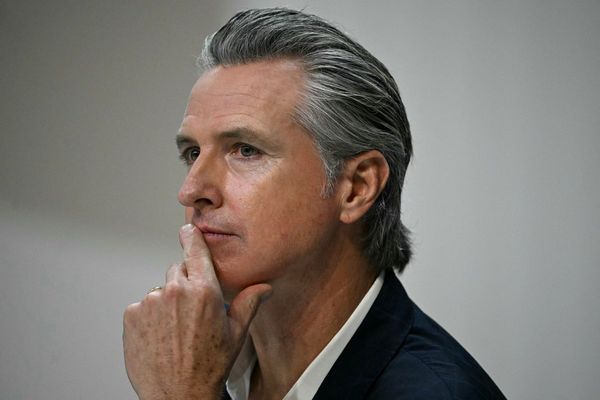
Pete Peeti flicks off the headlights, cuts the ignition and lets his truck roll quietly down a bush track, deep in the heart of New Zealand’s North Island. Twilight is slipping into night and rain is falling in thick drapes.
“Close your door quietly when you get out,” Peeti says. He slings his gun over his shoulder and scans the track with high-tech thermal vision goggles. “The hardier ones will brave the rain,” he says quietly.
The goggles render the landscape ghostly – skeletal trees and blotted shadows. Barely a minute passes before a splash of bright light moves into frame 30 metres away. It grazes for a moment, and then with the unmistakeable bounce of a wallaby, hops toward a new patch of grass.
Peeti drops flat against the wet earth and readies his shot. But for the rain, the night stills with anticipation. His gun cracks. “Got it,” he says disappearing into the darkness to retrieve the animal.
In front of the truck’s headlights, the hunter swiftly guts the wallaby and flicks the entrails into the bush for predator birds to scavenge. When he hops back into the driver’s seat, he brings with him the metallic smell of blood.
“While everyone is dreaming, I’m out here killing,” he grins. “I’m their worst nightmare.”
‘Plague proportions’
If Peeti is feeling up for it, he can kill 100 dama wallabies in this patch of bush in one night – a tiny dent in the population of thousands that have become pests in this one 55,000 hectare forest block above Rotoiti Lake, a smaller dent still in the exploding population invading the region.
“The wallaby has reached plague proportions,” Peeti says. “They are eating all the shrubs, baby seedlings – they are stopping the natives from growing.”
All along the bush tracks are the telltale signs: chewed up native toetoe, patches of grass grazed down to the dirt and clawed wallaby tracks.
Peeti – who is also a culinary and hunting TV star – has been culling wallabies and all manner of other pests including deer, pigs, possums and rabbits for more than 20 years. Recently, he was contracted by the Bay of Plenty regional council as a wallaby pest controller. It is a mark of the times – the country is finally catching on to just how big a problem the introduced marsupials are becoming.
“Just in the last couple of years, people are starting to wake up,” he says. “Left unattended, they’re going to spread like wildfire.”
‘We have a problem’
Wallabies were introduced to New Zealand in 1870, when governor Sir George Grey shipped them from their native Australia to Kawau Island, 45km north of Auckland, to add to his collection of exotic animals. They were later released into other parts of the country for hunting.
The country is now home to five introduced wallaby species and while it is difficult to measure the overall population, it is estimated up to 1.5m hectares in the South Island and up to half a million in the North Island are infested. Left unchecked, wallabies could spread across one third of country over the next 50 years, according to a report written for the Ministry for Primary Industries. By 2025, they could be costing the country $84m a year in damaged ecosystems and lost agricultural revenue.
“They eat any palatable species … if they are in the remnant native forest, they eat up the understory, and those that have high ranges of overlap with farmland – they’re competing for grazing with livestock,” says Bruce Warburton, one of the report’s authors and the science team leader in wildlife ecology at Manaaki Whenua, Landcare Research.

“They have just as much impact as goats may have,” Warburton says.
Dama wallabies, in particular, have been shown to have significant unwanted impacts on native vegetation, which has knock-on effects for ecosystems.
Warburton says the population started increasing when farmers decided to take wallaby control into their own hands, following the establishment of the Biosecurity Act 1993, which allowed farmers to opt out of paying councils to control pests.
“The results were variable,” Warburton says. “Some farmers did quite a good job and others didn’t.”
“Over the intervening years wallabies have increased in numbers and spread. It’s only when they start to be seen outside what is obviously their containment area and in high numbers, people think ‘we have a problem’.”
Adding to the spread are members of the public, who have been taking them out of containment areas and illegally “liberating” them into other parts of the country.

In 2020, the government allocated $27.4m over four years towards culling and controlling wallabies as part of its Jobs for Nature scheme – a significant injection of money into the problem, Warburton notes.
It is becoming a collective attempt at eradication – from the government and councils to iwi and individual conservationists and hunters, some of whom are making a sizeable amount of pocket money culling the pests.
‘It’s way too late’
Holly Sands, 16, flings a frozen wallaby carcass onto the deck of her twin brother’s ute. She is stacking carcass upon carcass of beheaded, declawed and gutted grey-brown bodies – ready to be made into pet food. “Some of these really big ones are worth around $20,” she says, proudly grabbing a big male by the hind legs.
Holly has a freezer-full. It is a fairly lucrative hobby – the sale of the wallabies, plus a few possums she sells for meat and fur, enabled her to buy a $10,000 car. Now she is paying her way through flying school.
“The average wallaby is worth about $7, because it is about $3 per kilo of meat which doesn’t sound like a lot but when we get 30 a night …it does add up.”
The Sands family farm - an impressive sweep of land with its own volcanic crater – sits just above Lake Ōkāreka, where wallabies were first released into the Bay of Plenty region in 1912. The family has been running deer, cattle and sheep there for 11 years.
When they first arrived the farm was overrun with wallabies.

“There were so many here, they were eating all the pastures, and we couldn’t grow crop paddocks or hay paddocks. They were eating all of it,” Holly says.
“We’ve shot about 11,000 … but there are definitely still a lot out there. If we stopped doing it for a couple of months or a year, they would all come back just as bad, if not worse.”
Holly jokes that wallabies will be extinct by the time she finishes her commercial flying license. But the reality is more sobering.
“It’s way too late,” Peeti says. Keeping numbers down is the next best thing, and a task he takes seriously as an Indigenous man. “We don’t whakapapa [have ancestral links] to the wallaby, we haven’t got them in our korero [narrative]… it doesn’t belong to Aotearoa”, he says, quoting Ken Raureti from Ngāti Rangitihi – an iwi located in the region.
“Here in Aotearoa, we love Aussies visiting us, especially with the rugby, but one thing we don’t like is the wallaby – they can have it back,” he says with a smile, before his gaze shifts back to the land.







